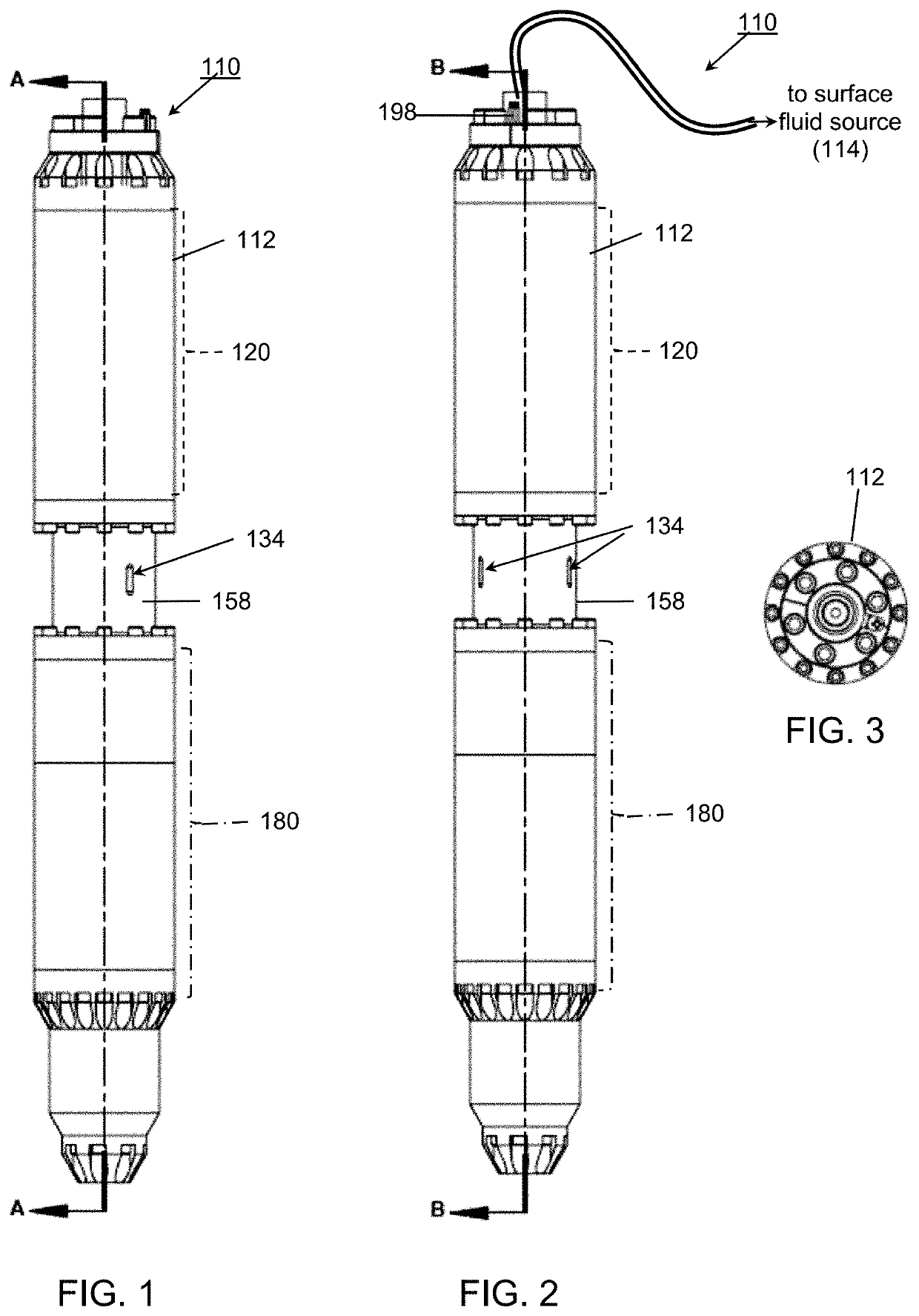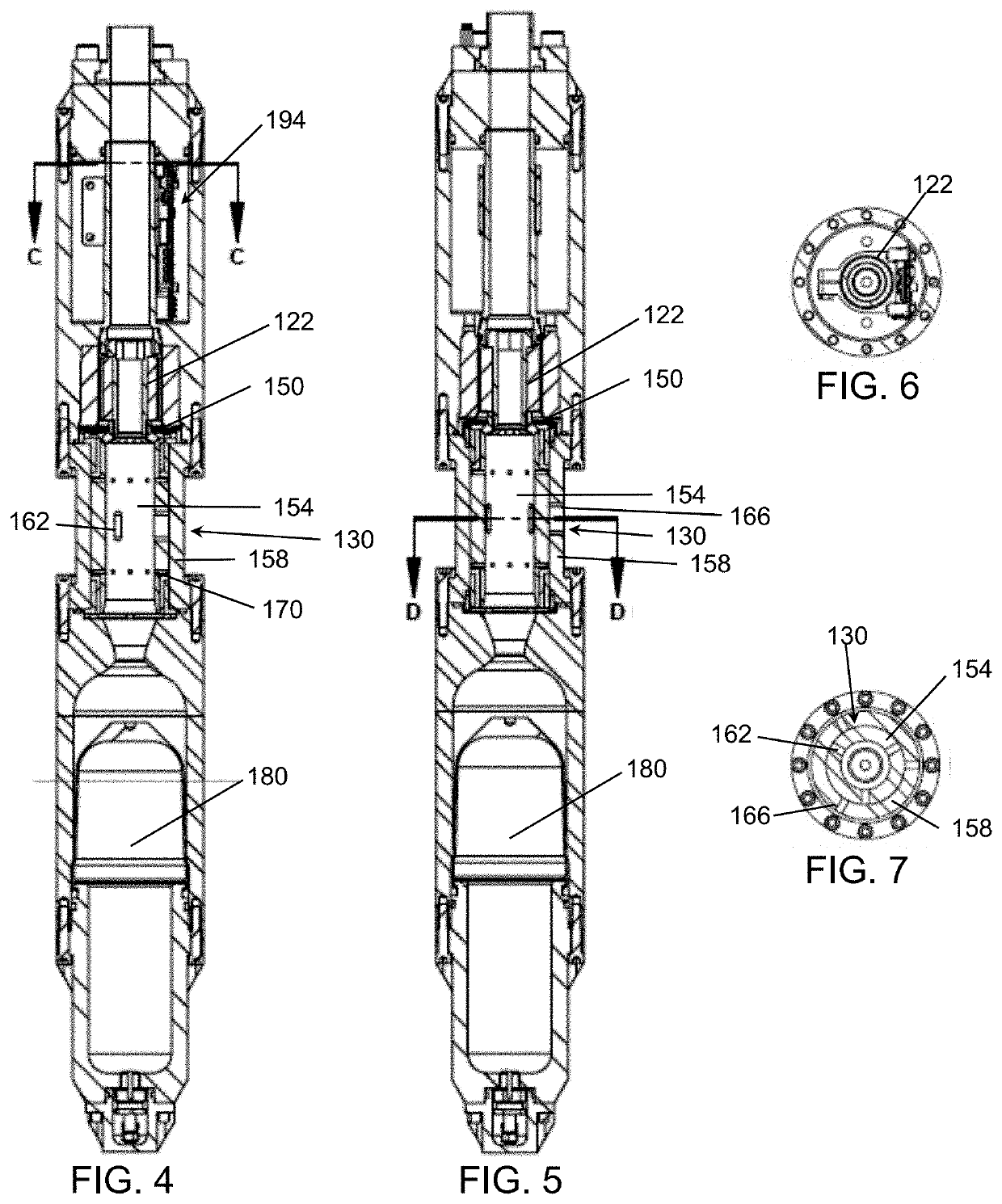Oil recovery tool and system
a technology of oil recovery and oil, applied in the field of oil recovery tools and systems, can solve the problems of reducing the productivity of wells, affecting the operation of wells, and substantial quantities of crude oil remaining in the ground, so as to facilitate enhanced oil recovery, reduce capillary forces, and reduce the adhesion between rocks
- Summary
- Abstract
- Description
- Claims
- Application Information
AI Technical Summary
Benefits of technology
Problems solved by technology
Method used
Image
Examples
Embodiment Construction
[0027]Early oil recovery tool (ORT) embodiments employed pressurized fluid released in pulses as described herein. Such tools required complex mechanical components and internal fluid pathways, bearings with seals to provide fluid to the tool and to produce suitable seismic energy or waves. Earlier tools also required a separate pump(s) in order to gather and pressurize fluid.
[0028]Oil Recovery Tool
[0029]The oil recovery tool embodiments 110 described herein may be employed for imparting seismic wave energy (e.g., in the form of a wave) within an oil reservoir, so as to alter the capillary forces of residual oil. The tool comprises: a housing 112; a source of pressurized fluid 114 and electrical power. And, as described relative to FIGS. 1-13, the housing integrates a frameless, brushless motor, operatively located within the housing to receive the pressurized fluid and turn a rotor relative to a stator and align respective ports therein to generate the seismic waves.
[0030]In accord...
PUM
 Login to View More
Login to View More Abstract
Description
Claims
Application Information
 Login to View More
Login to View More - R&D
- Intellectual Property
- Life Sciences
- Materials
- Tech Scout
- Unparalleled Data Quality
- Higher Quality Content
- 60% Fewer Hallucinations
Browse by: Latest US Patents, China's latest patents, Technical Efficacy Thesaurus, Application Domain, Technology Topic, Popular Technical Reports.
© 2025 PatSnap. All rights reserved.Legal|Privacy policy|Modern Slavery Act Transparency Statement|Sitemap|About US| Contact US: help@patsnap.com



